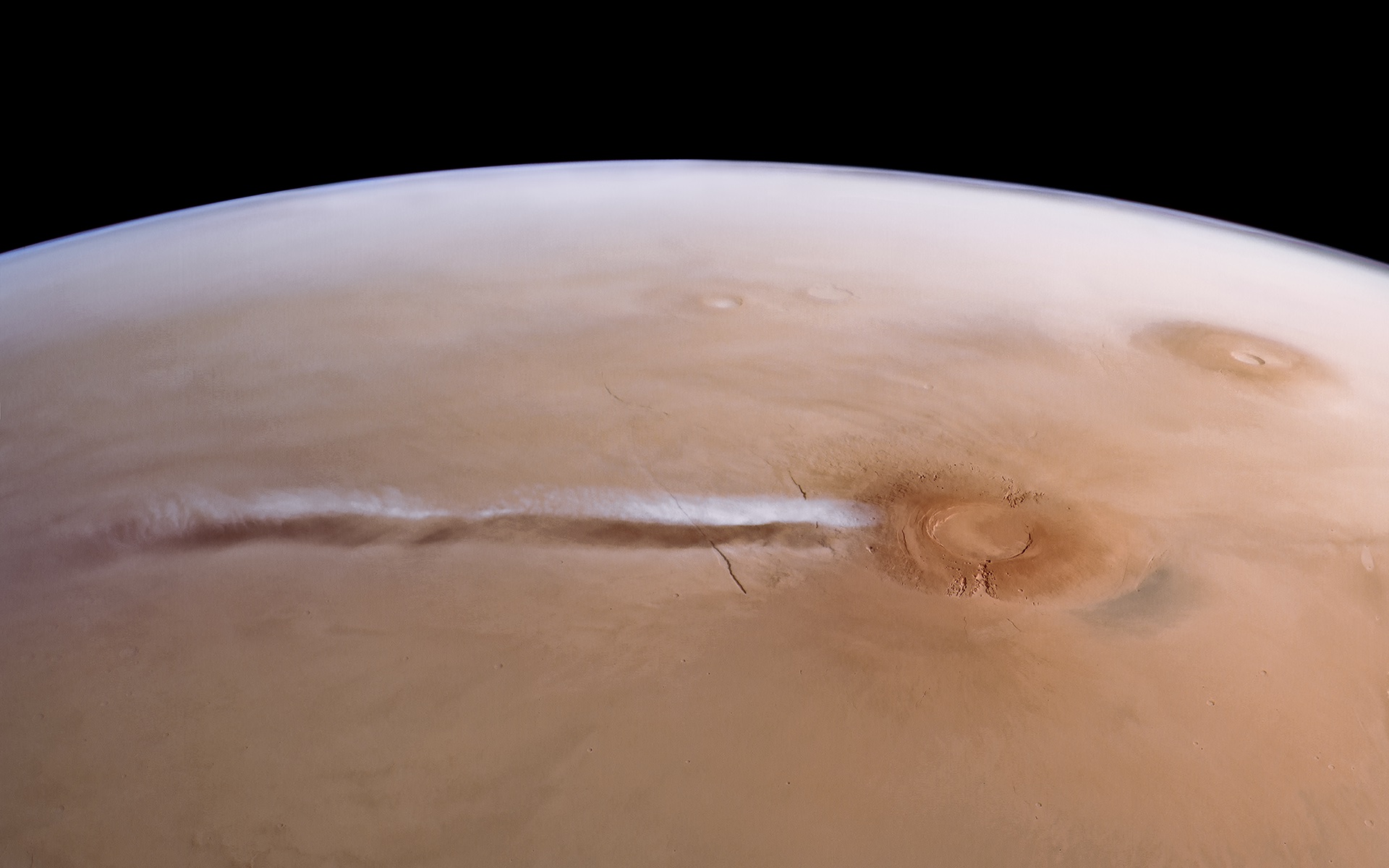Scientists have unveiled essentially the most in depth map of clouds on Mars ever created.
For the previous 20 years, the European Area Company’s (ESA) Mars Categorical spacecraft has photographed Martian clouds and storms, documenting how they form into hanging patterns regardless of the planet’s very skinny environment. This summer time, scientists on the German Aerospace Heart pieced collectively 1000’s of pictures taken by a digital camera on board the spacecraft right into a “Cloud Atlas” that takes you on an immersive digital tour of Mars’ clouds.
Understanding how and the place on Mars these clouds kind is essential to deciphering their affect on the planet’s local weather. The brand new catalog paperwork a wide range of cloud patterns, together with some in contrast to something seen on Earth.
“Clouds on Mars are simply as various and engaging as these we see in our skies on Earth,” Daniela Tirsch, a planetary geologist on the German Aerospace Heart, mentioned in a assertion. She introduced the brand new atlas Sept. 10 on the Europlanet Science Congress in Berlin. “We additionally see spectacular mud clouds that may unfold a whole lot of kilometers,” Tirsch mentioned — a phenomenon we do not expertise on Earth.”
Associated: Mars’ clouds are surprisingly Earth-like, regardless of wildly completely different atmospheres
Cloud “streets” unfold throughout northern lowlands
In contrast to Earth’s liquid-water clouds, Martian clouds are primarily carbon dioxide as a result of moisture within the planet’s air is so low, all of it could add as much as a layer thinner than a strand of hair. Typically, mud and water vapor additionally mix in, serving to craft linear rows of clouds like these noticed hovering above an enormous swath of lowlands close to Mars’ north pole often called Vastitas Borealis.
The Mars Categorical spacecraft imaged equally in depth cloud streets elsewhere on Mars, together with round Olympus Mons, Arsia Mons and several other different volcanoes within the Tharsis area close to the equator. “Whereas they resemble cumulus clouds on Earth, they’re shaped below completely different atmospheric situations,” Tirsch mentioned within the assertion.

A peculiarly lengthy water-ice cloud has appeared so many occasions over Arsia Mons, the southernmost of three volcanoes close to the Martian equator, that in 2020, scientists named it the Arsia Mons Elongated Cloud (AMEC).
The elongated wisp of water ice has shaped each spring on southern Mars, and it turns into seen within the early morning and lasts till midday every single day for at the very least 80 days. Inside hours, the cloud spreads at a mind-boggling pace of 370 mph (600 km/h). At its largest, it spans greater than 1,100 miles (1,800 kilometers) lengthy and 90 miles (150 km) throughout, stretching from Arsia Mons all the way in which to the extra well-known Olympus Mons, the biggest volcano within the photo voltaic system.
Though the AMEC repeatedly types over a volcano, scientists have lengthy dominated out that it is any form of volcanic occasion, as a result of spacecraft by no means detected spikes in methane, sulfur dioxide and different gases recognized to spew from volcanic eruptions. As an alternative, the cloud outcomes from the way in which native winds work together with the floor options. It types when water-ferrying winds are nudged up the flanks of Arsia Mons to larger, a lot cooler altitudes, the place among the moisture in them condenses.
“Understanding this cloud provides us the thrilling alternative to attempt to replicate the cloud’s formation with fashions — fashions that can enhance our data of climatic techniques on each Mars and Earth,” Agustin Sánchez-Lavega, a professor on the College of Basque Nation in Spain who co-authored a 2020 examine explaining the cloud’s dynamics, mentioned in a earlier ESA assertion.
Wind-lifted mud clouds left hanging within the air

The picture above exhibits a hanging cloud sample sculpted by gravity waves, that are widespread ripples in each Mars’ and Earth’s atmospheres attributable to air attempting to revive itself to equilibrium. On Mars, they’re sometimes noticed at midlatitudes within the winter; NASA’s Curiosity rover recorded the first ground-based views of such clouds again in 2017.
A particular sort of gravity cloud is a lee wave, a recurrent ridge-like cloud sample that builds on the downwind aspect of mountains throughout Mars. Relying on the form of its impediment, this sort of cloud takes on barely completely different geometries, scientists say.







